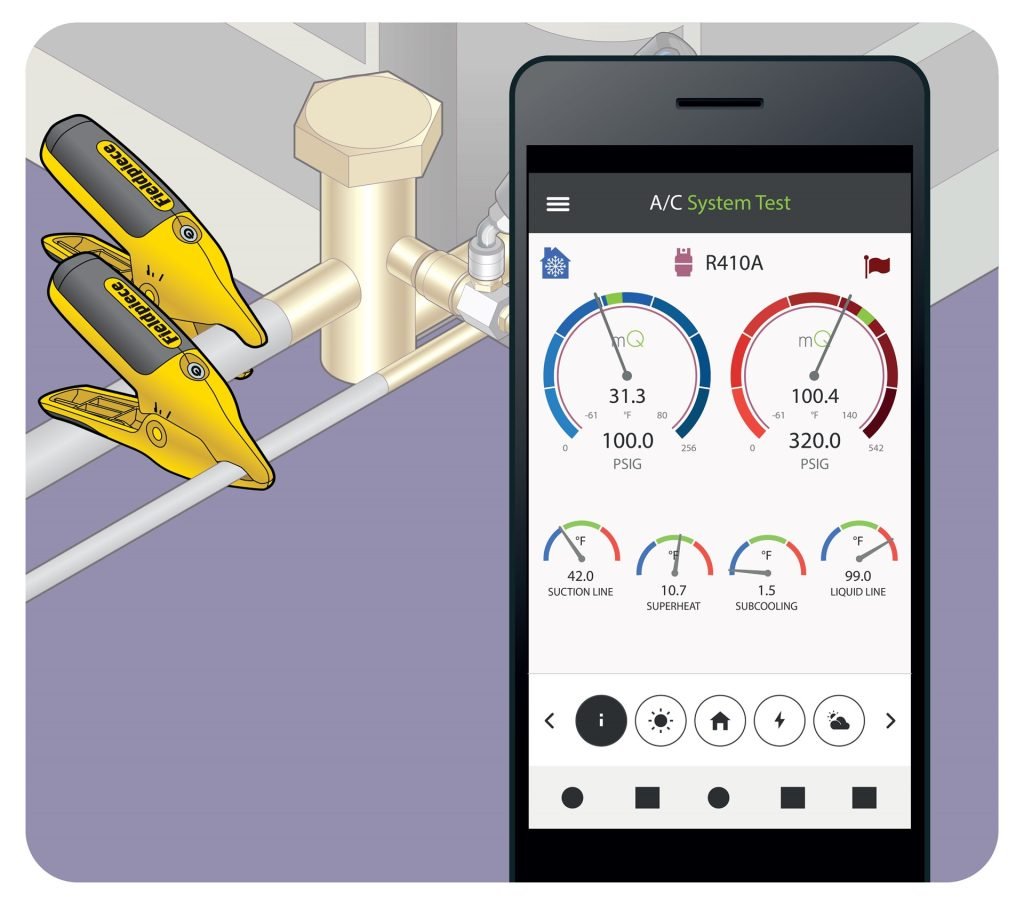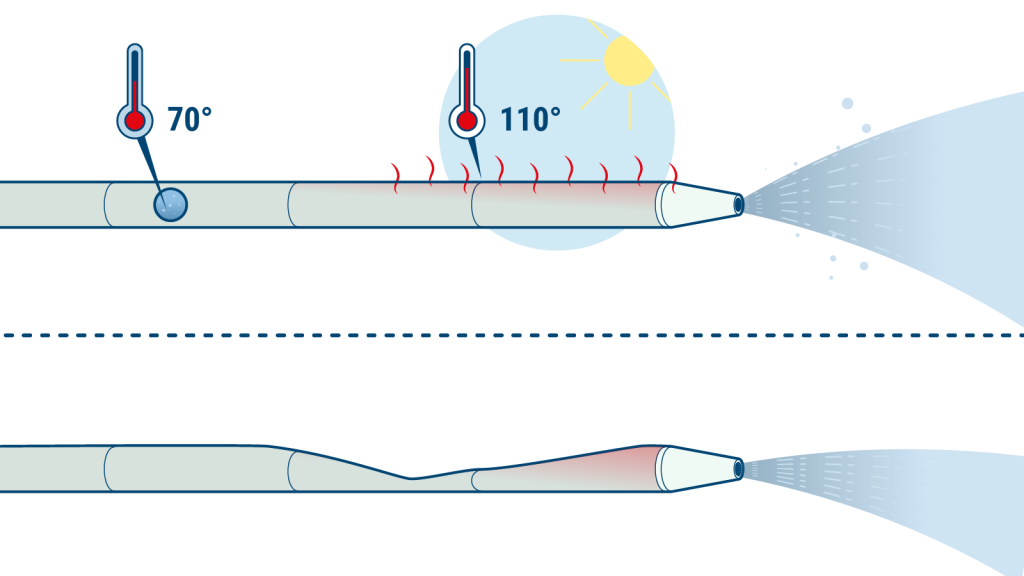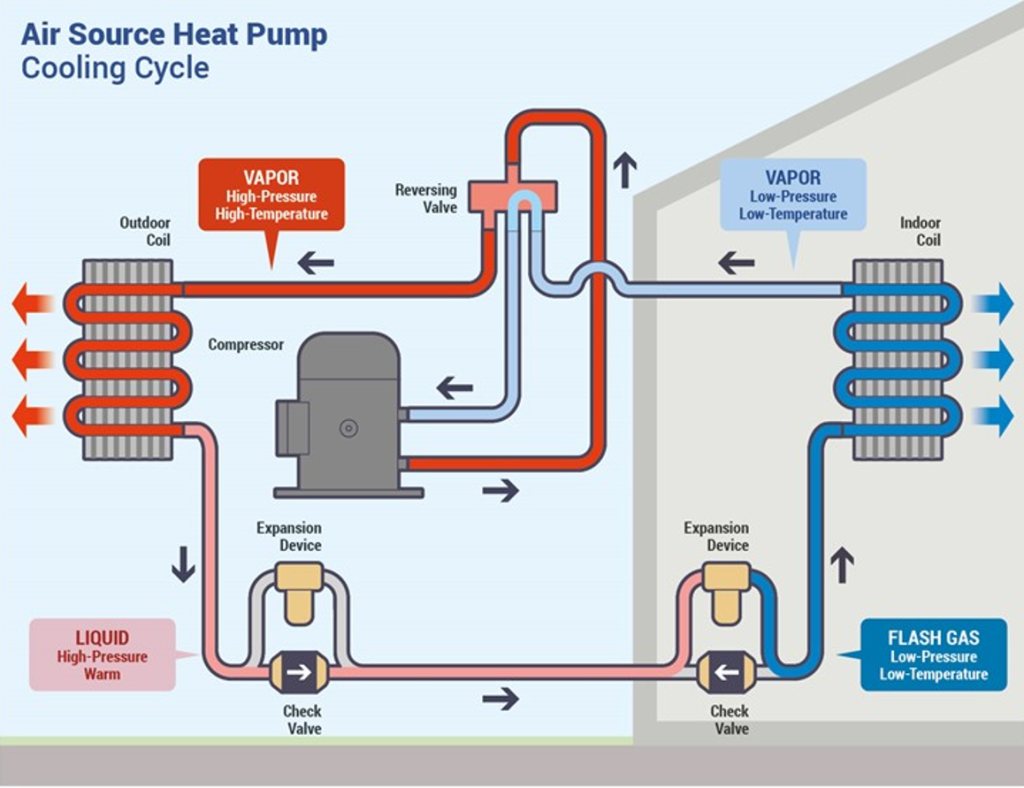Get Tech Tips
Subscribe to free tech tips.
One Way to Picture Superheat and Subcool
It took me years to build a picture in my head of what superheat and subcool mean. They were these strange words that dropped out of nowhere when I entered the HVAC world, and in the midst of grappling with so many other things, I could tell they were very important. Over time, I have, as Bryan often talks about, built a “picture in my head” of what these concepts mean to me.
This tech tip will not be a super technical overview of superheat and subcool, which have been covered extensively here and here… And also here, here, and here. It’s just about the picture in my head.

We all use analogies to understand things we cannot see. When we put our gauges on a system, we get a pressure that correlates to a temperature. When we put a clamp on a line, we directly measure the temperature. The difference between the P/T correlation we read with our gauges and the temperature we read with our clamps tells us something about what’s happening within the system. It tells us about something we can’t see. What kinds of things are we trying to learn about the system?
Quite simply, we are trying to learn if the system is charged correctly. The tools we have to do that are the system pressures and temperatures. How do they help us tell if the system is charged correctly?
Subcool and superheat help us discover 3 things about the state of the charge:
- Is there enough refrigerant in the system?
- Is heat transferring properly from the air into refrigerant or vice versa?
- Is there something blocking the flow of refrigerant?
Imagine refrigerant is water in a hose. The water temperature is 70 degrees, and you want to drink a glass of it. (Yes, you are the type of person who likes to drink water from a garden hose.) Unfortunately, the hose has been lying in the sun for several hours, and it is 110 degrees. Will the water coming out of the hose be 70 degrees right away? If you turned on the water and monitored the temperature of the hose wall, how quickly would it change from 110 to 70? What if there was a kink in the hose? Would that change how quickly the temperature of the hose wall changed?

Again, this is not a perfect representation of what is going on inside an HVAC system with regard to the refrigerant cycle. But it helps me understand something about line temperatures and why they can change.
Imagine you have a hose with low flow or a kink. The water coming out of the hose is still 70 degrees, but because there is less of it, it cools the warm part of the hose less quickly. So, what would low charge on an HVAC system look like? Actually, it’s very much the same on the line temperature side of things. The less refrigerant flowing through the system, the less the suction line of the system will cool off.
You can have a warm suction line (high superheat) due to low charge, a restriction, or high airflow. This indicator is one of many that you need to consider when diagnosing refrigerant problems.
Looking at the pinched hose example, we can see there is a drop in the volume of water flowing through the hose as well as a drop in pressure. The same thing occurs in the refrigerant cycle. Some reasons changes in system pressure occur are a loss of refrigerant, change in piston size, opening and closing of the TXV, or a restriction. Craig over at AC Service Tech has a great video showing water flow through a TXV, you can check it out here.

Hopefully, this mental picture helps you understand a little bit more about system pressures, temperatures, and subcool and superheat. It’s far from a perfect analogy, but it has been helpful for me on my learning journey.
—Matt Bruner











Comments
To leave a comment, you need to log in.
Log In